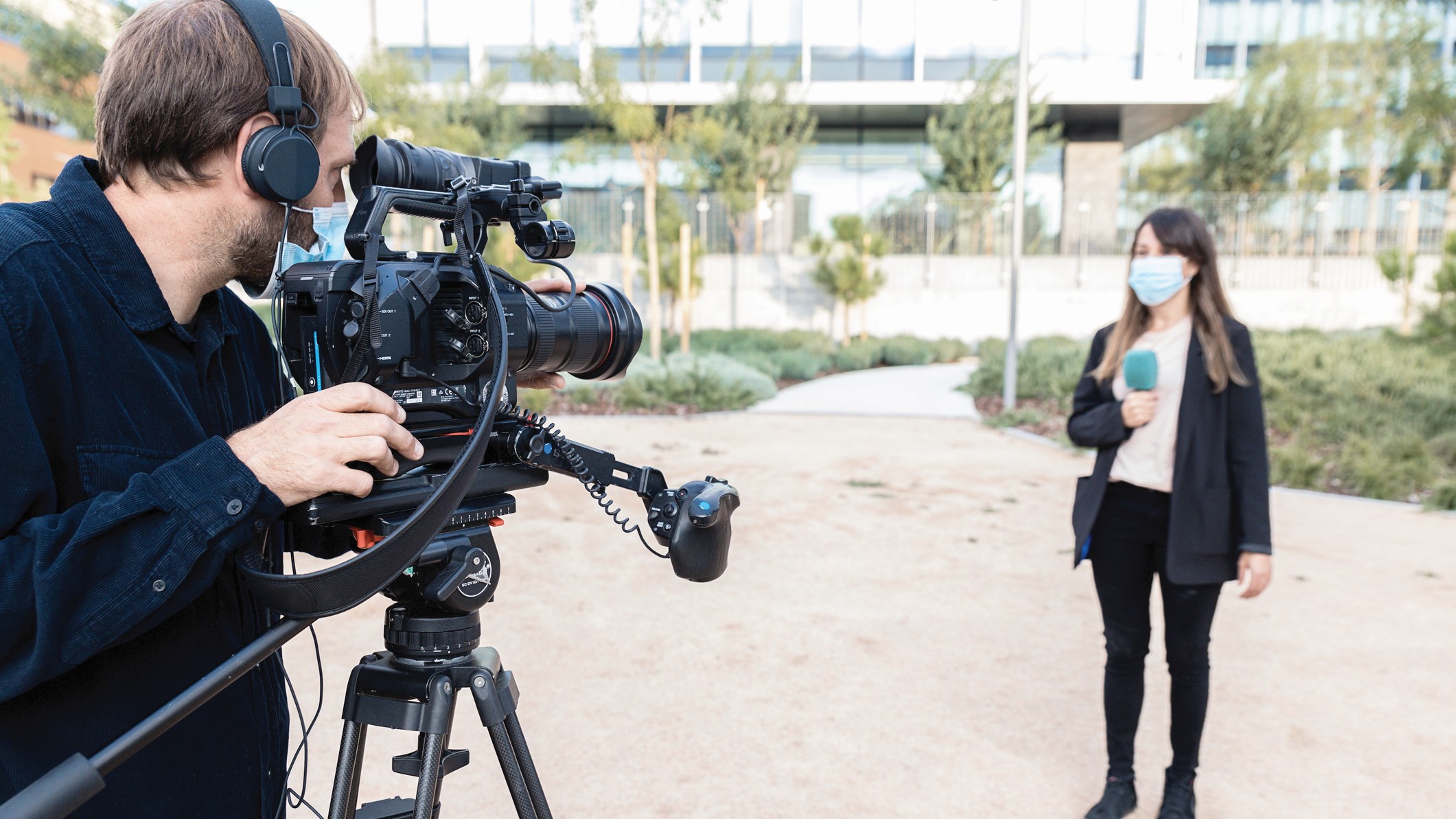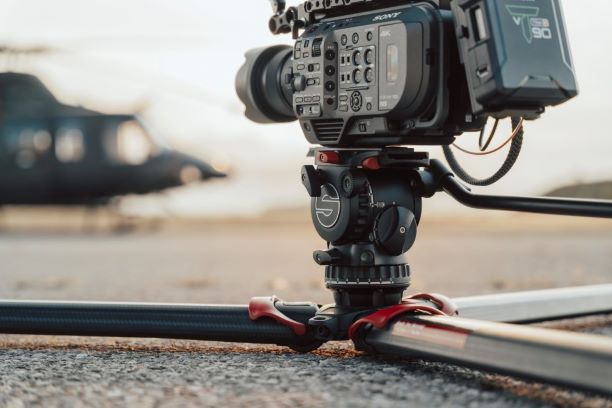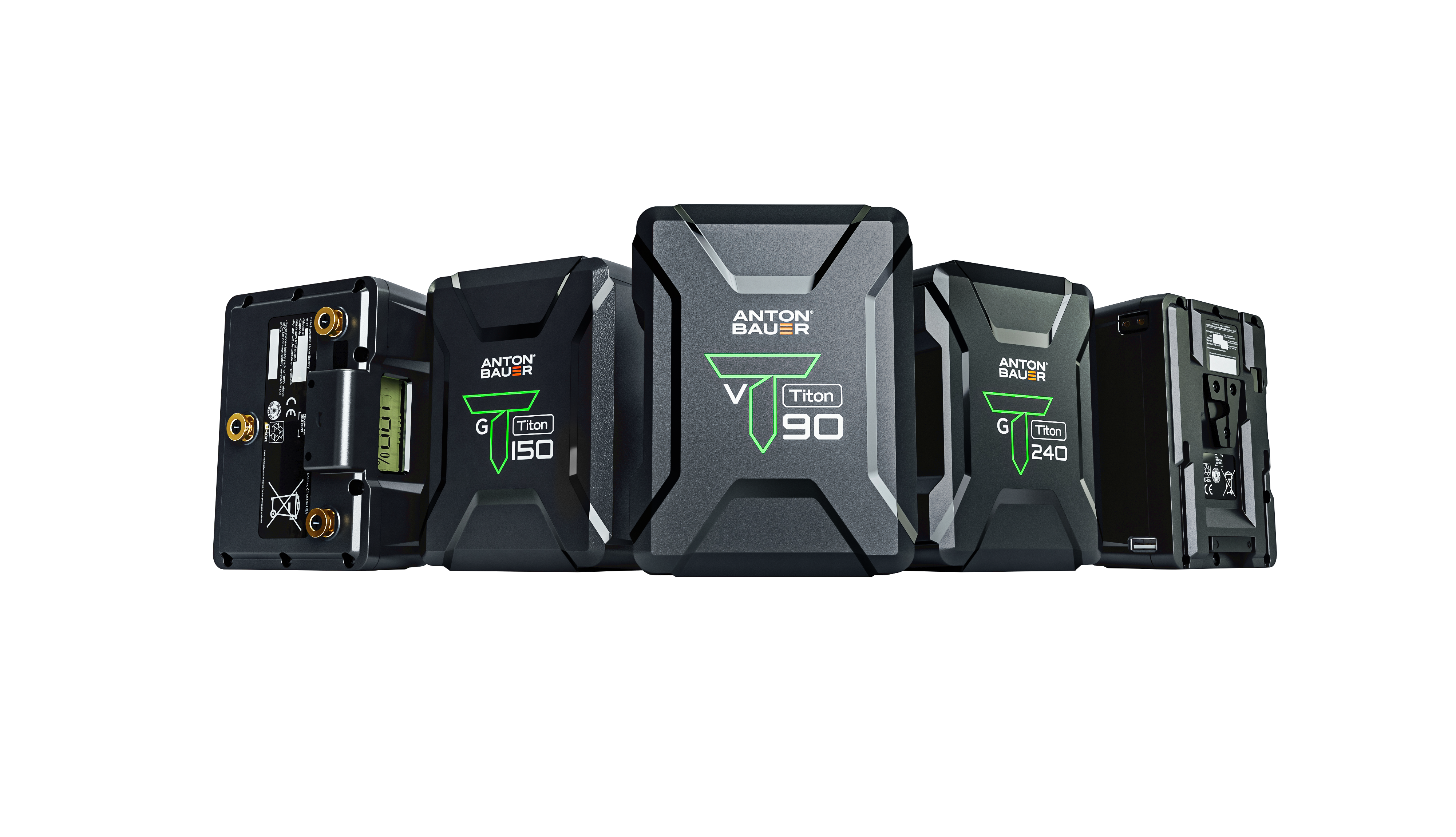New ENG Gear for ‘Socially Distanced’ Reporting
Fewer crew members, longer hours mean adapting to new workflows, tech

SEATTLE—While citizens have had to spend much of the past year in place, broadcasters haven’t had that luxury. As a particularly news-filled 2020 gives way to an even busier 2021, well-equipped news production crews are on the constant hunt for gear that will help them cover the news while staying safe.
LIGHTING
Strict observation of social distancing has had a particular effect on lighting for interviews according to Art Adams, cinema lens specialist at ARRI, who added that the company's new Orbiter is just the ticket for socially distanced interviews.
“Orbiter has the best color, and also gives you the best specs and flexibility,” he said. “It’s kind of a ‘Swiss Army Knife.’ You can use them for quick interviews, or for theatrical and motion picture effects, or for chasing the color of the sun.”
Because the Orbiter is a hard light, it’s necessary to soften its output. “Typically I might try to use Orbiter with a four-foot medium Chimera, even a six foot octagon, which is probably bigger than most people would carry,” Adams said. “You want to create a big, soft source. The smaller the light source is, the more the shadow matters. But the bigger the light is, the more forgiving it tends to be.”
Adams noted that sometimes shooting interviews is a volume business, where there’s no time to tweak lighting between sessions. “People come in, sit down, and 10 minutes later they leave, you don’t have any time in between,” he said. “So the softer the light source is, the better.”
Reporting during the pandemic is forcing ENG crews to spread further apart, according to Litepanels product manager Michael Herbert. “It’s making guys doing these interviews and doing the lighting setups for them, having an increasingly large need for adaptability,” he said. “You’ve got people sitting six or eight feet, or even more in other circumstances. It varies by state, by studio and by building almost.

“When redesigning a lot of our products with the output in mind, you want to have more than you need,” Herbert continued. “That way, if necessary, if you have to move your lights, if you have to move everything further apart, you can always crank the light up to compensate for that.
The professional video industry's #1 source for news, trends and product and tech information. Sign up below.
Litepanels had this in mind when developing the Astra, which looks like a typical panel light except for its Total Internal Reflection (TIR) lens system. TIR puts a lens on each individual LED.
“The lens grabs all the light coming off each LED and pushes it all forward within a 44-degree beam-angle,” Herbert said. "This means that from a relatively low power fixture, you get a really punchy light source.”
CAMERA SUPPORT
Keeping reporters and their subjects apart via social distancing has re-emphasized the importance of tripods when reporting in the field.
The pandemic has also accelerated the trend of the one-man-band reporter, according to David Sheppard, international sales, distribution and channel manager for Shotoku. “[Reporting] has been streamlined down to where one person has gone out with all the equipment, set it up and even done the interview as presenter,” he said. “And with Covid it’s kind of accelerated that trend.”
In response, Shotoku introduced two new lightweight tripods and fluid heads, the SX200 and SX260. “We’re the lightest in class with carbon fiber legs,” Sheppard said. “And it ships in its bag all assembled, so all you’ve got to do really is pop it out of the bag, put the camera on it, adjust the legs and you’re ready to go.”
The heads feature “Viscam drag” (the company’s continuously adjustable fluid drag system) on a stepped system for effortless and speedy drag selection, Sheppard added.
“We’ve engineered that feeling in these heads into the drag system that’s actually continuously adjustable,” he said. “It’s the same as our studio quality heads. There is no ‘1, 2, 3’... it’s infinitely adjustable. It’s got this nuanced control that people like.”

Jose Larios, sales manager for Libec Sales of America, said there’s been a lot of demand for quick deploying tripods, which led the company to redesign their T650 to the 650EX.
“It has a [sic] other features, including the sliding plate range,” Larios said. “You’re able to use the slide plate just like more professional video heads that allow you to counterbalance the weight by moving the camera back and forth.”
It’s also very quick to set up, Larios added. “You literally take it out of the bag; the pan handle is already attached to the head. When you deploy the tripod and head out of the carrying case, the head is already attached and a knob adjusts the pan handle into the position you want before using.”
Libec recently redesigned another of its quick deploying camera support system, yielding the TH-M monopod. “One upgrade is that the quick release can be attached and detached from the side,” Larios said. “And the new model allows the pole to be locked in not only a vertical position, but also on an angle.”
Kyle Dann, product manager at Vitec Production Solutions, part of Vitec Group plc, provided yet another reason to have a camera support system that’s easy to deploy. “Deployment speed is very important because it gives confidence if you’re quick and efficient in setting up the interview,” he said. “And saving time in setting up is important because it gives you more time to work on your lighting and get the interview done as quickly and efficiently as possible, while maintaining distance.”
Among Vitec's rapid deployment solutions is the Flowtec tripod and Sachtler aktiv head. “The SpeedSwap system delivers the fastest way to switch between tripod and slider and other support systems in seconds," Dann said.
POWER SUPPLIES
With fewer places to gather (particularly indoors) between live reports, news crews have also faced increasing challenges in maintaining charged power supplies.
“When Covid hit, we had an onrush of broadcast customers reaching out because they had to adapt to a relatively new workflow from an ENG standpoint,” said Steve Turner, product manager and senior manager of strategic relationships, Vitec Group plc. “What that meant was a lot of refreshing of old kits and ‘How can I make my life easier when I’m stuck in a news vehicle all day, without being able to go back to the station?’”
The company responded with the Anton Bauer Titon 240 battery, its highest capacity onboard battery, at 240Wh.

“Just for a ballpark estimate if your camera runs 25W—which is typical these days, even less—that’s about eight hours per battery,” Turner calculated. “So if you’re able to outfit a photographer with four batteries and a charger, then they are more than set for the day.
"All Titon lines now incorporate a smart USB, so it’s fully compatible with charging of cellphones, as well as the industry standard power tap for Anton/Bauer,” Turner added.
PAG takes a different path toward capacity through its PAGLINK technology, according to Bob Carr, sales director for PAG America. “Because of PAG’s linking technology, we can link up to eight 150Wh battery packs. So you’re talking about up to 1,200Wh of power.”
PAG battery packs are available in three sizes: 50, 99 and 150Wh. The first battery pack clips to the back of the camera, and one after another of the packs clip piggyback on to the one before it.
“You don’t have to put anything between batteries you want to link, just plug two or more batteries together,” Carr said. “The camera draws off the battery with the greatest charge. You always have the ability to hotswap as you shoot, so there’s no need to ever stop shooting.
“You could put a power hub in between any of the linked battery packs, which will allow you to have five more connection points,” Carr added. “They’re switchable so you can have five USBs, five V-taps, five LEMO two pins.”
New PAG batteries going forward will have the ability to be serviced and re-celled by major customers and regional offices.
Many reporters are now doing more of their planning and reporting from home or anywhere than at the station, forcing better preparation, according to Kevin Crawford, vice president for engineering at Frezzi.
To help news crews prep for longer workdays, Frezzi redesigned and retooled its FB240 240Wh battery pack.
“It’s designed to run all day without recharging, and has a power tap and an integrated USB tap to charge cellphones and other USB charged devices,” Crawford said. “They’re pulling other peripherals off of that FB240. It’s good to have that big bucket, because everybody’s going with LiveU's now, and all kinds of extra devices, so it’s good to have that big bucket.”
The new FB series of battery packs has a ruggedized case, which is serviceable and resistant to drops up to four feet, Crawford added. “That means if there ever is a problem, we could swap out the case. That’s a big thing. I think we’re the only ones in the industry to do that.”
